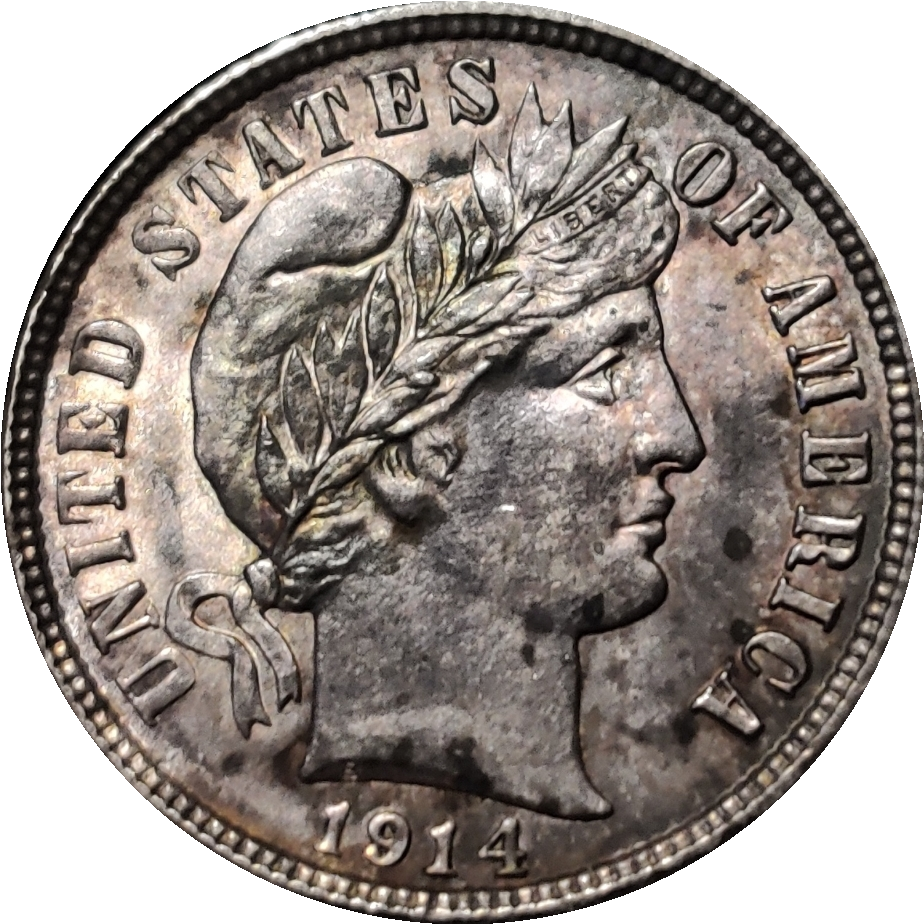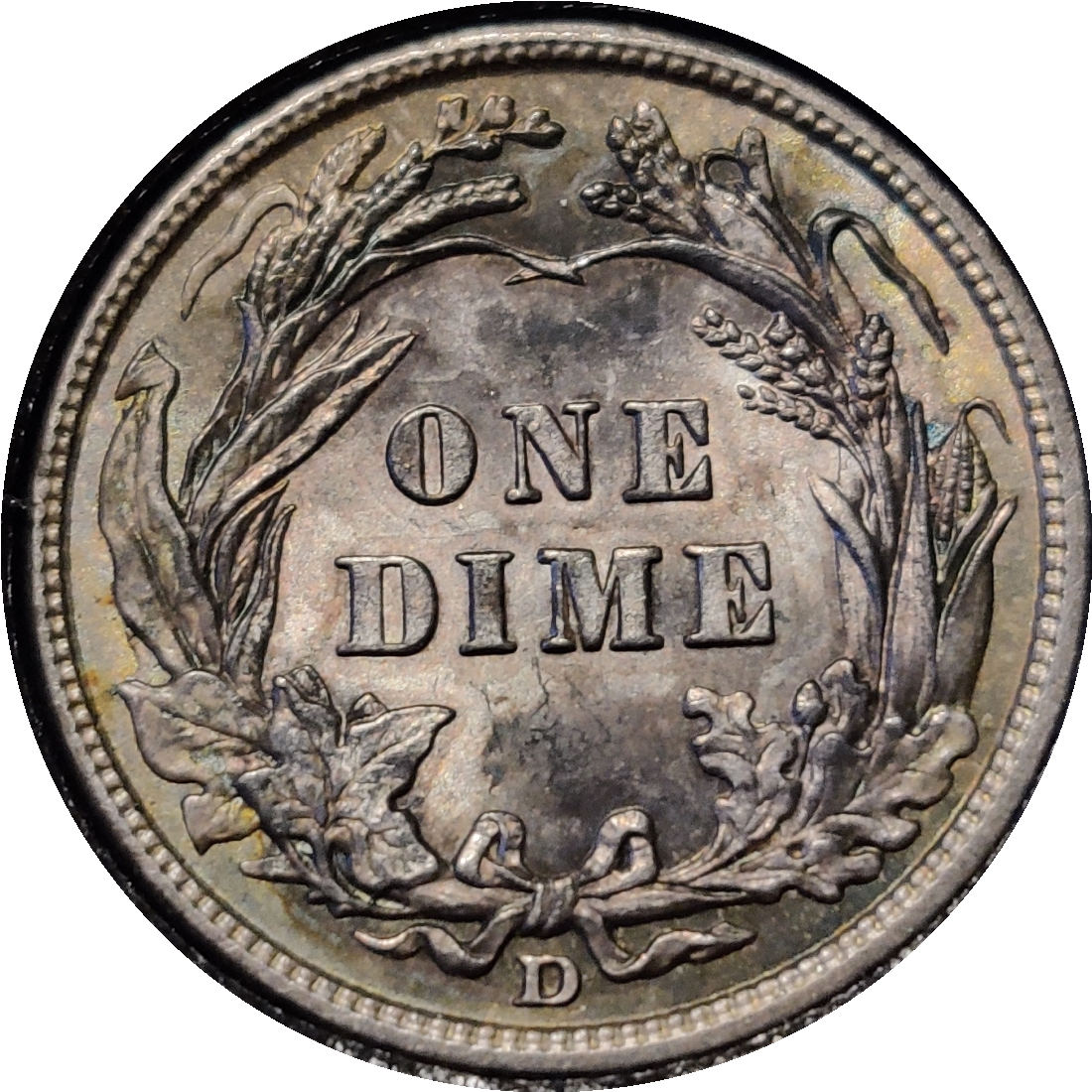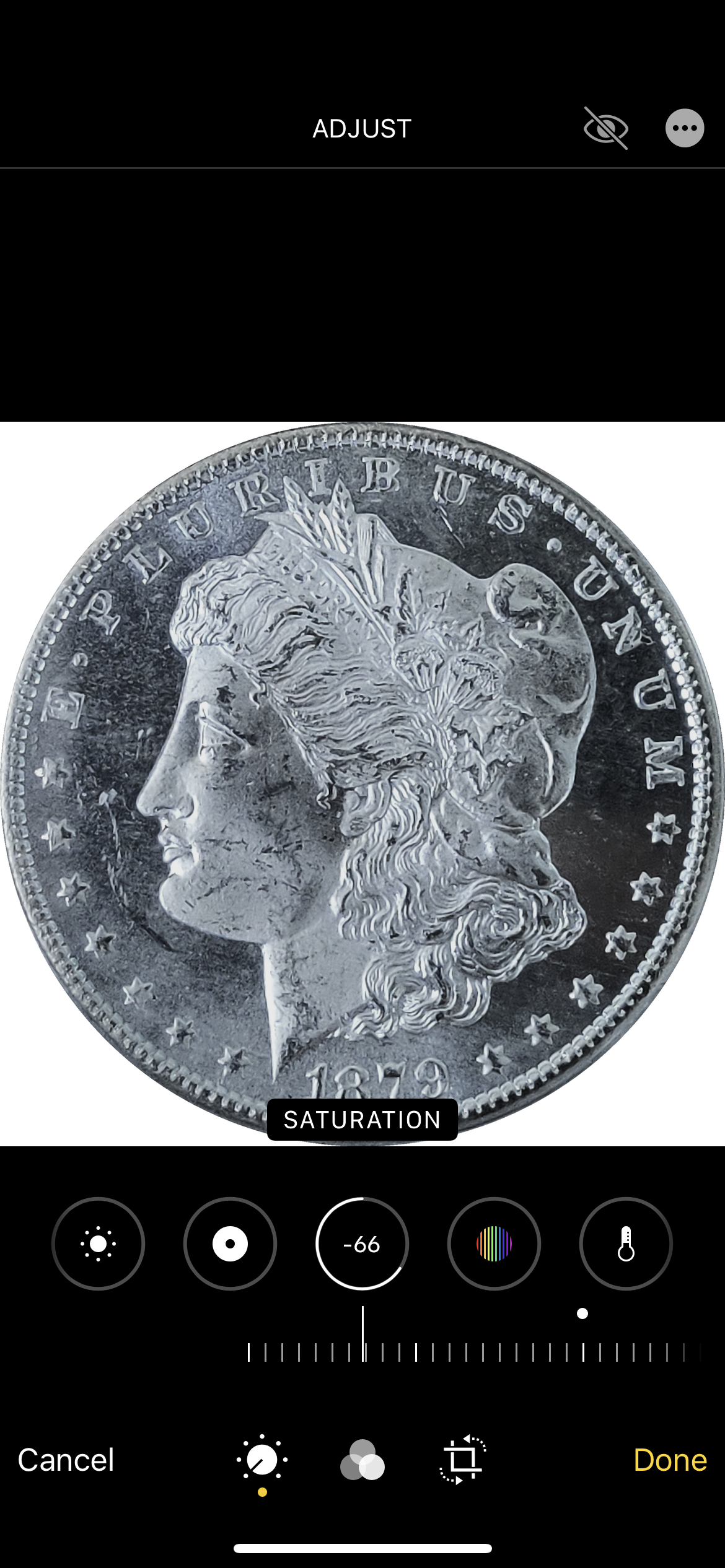Tips on capturing good pictures
 dagingerbeasttt
Posts: 808 ✭✭✭✭
dagingerbeasttt
Posts: 808 ✭✭✭✭
So I feel my picture taking has gotten far better since my first attempts but I was wondering if there was some tips or tricks to better capture luster and things of that nature. Your time is appreciated, thank you kindly 😊
1
Comments
Generalization: Contrast in your lighting will enhance contrast in your coins. Flat lighting will suppress it.
The ultimate in contrasty lighting is a few point sources of light, like LEDs, while the ultimate flat lighting is an overcast day. Where you put your lighting on that continuum depends on the coin you are trying to light and the amount of contrast you want in the luster.
Keeper of the VAM Catalog • Professional Coin Imaging • Prime Number Set • World Coins in Early America • British Trade Dollars • Variety Attribution
Start with Mark Goodman's tips from his website:
http://coinimaging.com/photography.html
He is on these boards, but I don't think he has been active here lately. Also, his book "Numismatic Photography" is an excellent reference.
Thank you both!! I appreciate it !
I can't offer much on this subject other than the lighting is very important.
I’d offer that lighting is absolutely the most important part.
If you are using an automatic white balance point and shoot the background is very important. Experiment with switching them around if you are.
I'm not gonna pretend I have any clue what that means. I feel kinda clueless..
I'm not very familiar with the terms you are using
.
move your lights around A LOT. height, distance etc. pay attention to results.
learning some basic editing skills can go a long way. cropping and understanding dimensions and image size is a major tool.
post images here for critiquing advice.
It seems may have alot of work ahead of me! But a challenge I think I will enjoy embarking on😊 in my last thread I have some pictures of a Morgan I purchased raw. I seemed to capture the toning well but the luster not so much . So I had to take a video and post it on the thread to capture luster😂 thank you for the advice!!
Experimenting is most important, reason being, you know the image your trying to capture.
Another reason is, any input from you will get us in focus of our goals.
Pun? Sorry couldn't help my self .
A point and shoot camera is exactly that, It automatically focuses and adjusts the exposure etc. Different backgrounds cause the camera to adjust in different ways, as well as the type and how intense the light source you are using.
Ok how's this ??


The lighting of course.
Never mentioned but so important .... Huge image files and Photoshop
The reverse shot isn't bad, though it would be worth continuing to play with the lighting to more evenly light the coin and pick up more detail. The obverse photo is significantly overexposed, and the white balance seems to be shifted to blue.
@ErrorsOnCoins
I seen didn't really notice it until I had the pictures side by side. I will have to play with the lighting some more! Thank you for the feedback!
@dagingerbeasttt
As @airplanenut said adjusting the White Balance (ie post image editing) will help. Either way, it is a beautiful coin.
Thank you
I hope this is better.
Raw, nice original surfaces


__
something is still really wrong. could be something simple.
will you post your camera/lens types in the OP and also a pic of your setup would help. saves us a lot of wear and tear being able to see/know what you're working with.
you are doing pretty well on post-processing. cropping/posting images. have you tried putting images side-by-side and then linking to larger image via a linked image?
@LanceNewmanOCC
No I have never tried that.. I'm not sure how to go about getting that done. And I am using the camera on my phone,and just taking the pictures on a flat surface. I still haven't been able to figure a good setup although it would probably be helpful if I bought some kind of stand.
If you get that blue tint like you have with the Morgan, you can adjust the saturation down on the image in the phone edit feature and it should correct the color. Often that works better that adjusting the tint. Sometimes my iPhone makes that same blu tint on blast white coins for some reason, and through experience I found turning down the saturation until it looked like the coin in hand was the easiest tweak to fix it if you don’t want to take the time to reshoot it. But playing around with the lighting and reshooting works too.
Like this

Mr_Spud
Mark Goodman's book is fantastic.
For me, good photos came down to:
You mention capturing luster. How do your eyes and brain do this? Think about it. What we "see" is much more than just what we visualize. Our brains know that the color of a red cent is more or less uniform in flat light. You can arrange the lighting in a way that produces so-called luster bands on the photo.... and our brain interprets the coin as being lustrous. Also, you probably didn't even think about it, but the outline shadow effect around the coin was added in post-processing, just like PCGS does for TrueView images:
Also, think about how our brains process an image to determine contour, relief, texture, and such. Shadows provide a sense of depth. Creating appropriate contrast in the photo is important:
For starters, I'd also focus on crispness of detail. Look at the lettering and dentils on this coin. A shaky lens or long shutter time will never allow you to capture this:
A correct and lively portrayal of color is also important. The white balance must be set carefully and a bit of post-shot processing can bring out the coin's beautiful attributes without making it look more beautiful than it does in hand:
Once you get that, learning how to show proofs and low-contrast coins to their best advantage is the next step. For me, it's a work in progress. Some coins are truly difficult to capture well. Some of the folks who show of their work here are truly phenomenal.
This one was a particular challenge:
It's a fun hobby-within-a-hobby. Enjoy the ride.
nm - Google had my answer
Successful BST (me as buyer) with: Collectorcoins, PipestonePete, JasonRiffeRareCoins
Those all are beautiful examples!. Thank you for that info. It might take me a while to digest that all.
Thanks!
Some light (daylight, for example) is bluer than other light. I don't know exactly how white balance algorithms works, but depending on what light is used, you'll get casts that need to be corrected. It's for this reason that I have created a custom white balance setting for my coin setup, so my camera knows (and doesn't guess) the exact color of my light.
As an aside, when I do landscape photography, I use auto white balance, which is usually pretty good (much better than with coins). I just edited a group of photos from a gorgeous day with a magnificent blue sky. It was enough that the white balance got fooled a bit and many of the photos had some extra blue even away from the sky. An easy fix on a computer, but an example of the camera getting fooled.
I think I'm getting closer ?
You are getting closer.
Washington looks good.
It'll come.
Another thing. We are accustomed to critiquing photos from fancy set ups.
That's pretty dang good for a phone!
Thank you!
It looks great to me 🌞
Mr_Spud
I think you will get better responses if you share what gear you are using.*
Camera body? (DSLR, fixed lens, cell phone, etc)
Camera lens (assuming a DLSR or mirrorless body)
Lighting (source and temperature, if known)
What file type are you shooting, JPEG, TIFF, RAW?
What program are you using for post-processing (if any)?
It takes some practice and experimentation ... and you will get there! Keep at it!
*For example, if you are shooting images as JPEG files from a fixed lens (point and shoot) camera using incandescent bulbs, it gives a different starting place than using a Canon full-frame DLSR with a 100 mm macro lens using 5000K LED bulbs and saving the images as RAW files. [That's not nearly as complicated as it may sound, BTW.]
See http://www.doubledimes.com for a free online reference for US twenty-cent pieces
I'm just using the camera on my phone.
7+ pro
Your photography has improved significantly. Keep experimenting, and work towards upgrading your set-up. Phones are the convenient option, but a proper DSLR and proper lights will get you closer towards your goal. I also recommend ditching the LEDs at some point and replacing them with desk lamps and classic bulbs balanced for white light, this is something that can be done for under $60 at just about any hardware store.
Furthermore, if you have the time to do so, you should take a look at film theory, color theory, cinematography, and the concept of "suspension of disbelief". None of these are directly connected to coins, yet a lot of knowledge towards coin photography can be gained from those fields.
Custom album maker and numismatic photographer.
Need a personalized album made? Design it on the website below and I'll build it for you.
https://www.donahuenumismatics.com/.
Gotcha. There are some folks here with a lot of experience getting pretty good images from cell phone. Lighting will be your key as cell phone censors are very small and don't capture near as much image data as traditional digital cameras. Keep working at it!
See http://www.doubledimes.com for a free online reference for US twenty-cent pieces